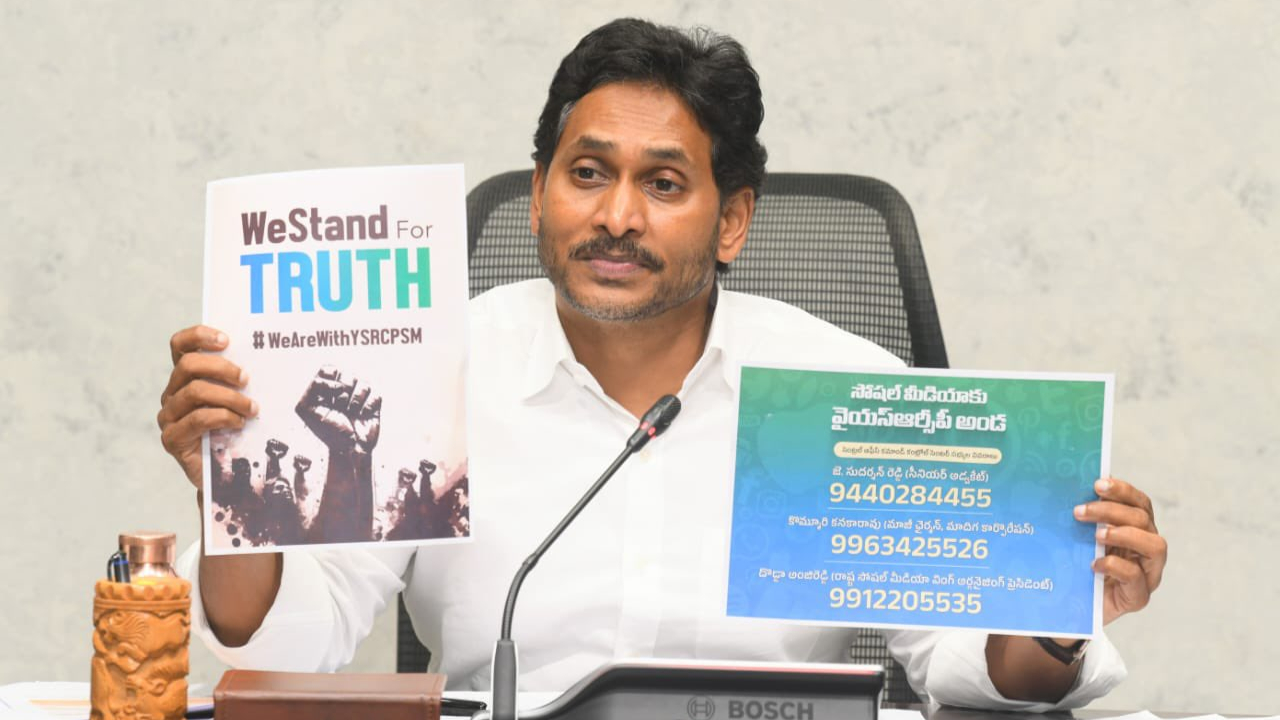The capital controversy, once again speaks of volatility in Andhra politics, where policies are often rewritten by the EVMs.
Published Sep 16, 2025 | 2:32 PM ⚊ Updated Sep 16, 2025 | 2:32 PM

YSRCP chief Jagan Mohan Reddy. Credit: x.com/ysjagan
Synopsis: YSRCP abandoned its three-capital plan for Andhra Pradesh, endorsing Amaravati as the primary administrative hub. The shift, announced by Sajjala Ramakrishna Reddy, aims to regain voter trust in the Krishna-Guntur region. TDP dismisses it as opportunism, while YSRCP insists it’s a pragmatic move, advocating a compact capital to avoid excessive spending.
In a dramatic volte-face, the YSR Congress Party (YSRCP), a few days ago, abandoned its three-capital formula for Andhra Pradesh and is now fully backing Amaravati as the state’s primary administrative hub.
The shift comes more than a year after the party’s crushing defeat in the 2024 Assembly elections, where the capital issue is one of the factors that is perceived to have played a role in turning voters against then Chief Minister YS Jagan Mohan Reddy.
Senior leader Sajjala Ramakrishna Reddy now insist that if YSRCP returns to power in 2029, Jagan Mohan Reddy will run the government from Amaravati—an emphatic reversal of its earlier position. He, however, said that though they are not opposed to Amaravati, they were very much against profligate spending.
“A modest capital in about 500 acres between Vijayawada and Guntur is enough,” he said.
Sajjala Ramakrsihna Reddy’s announcement and similar opinion voiced by former minister Ambati Rambabu, has already triggered strong reactions. The ruling Telugu Desam Party (TDP) has dismissed the move as a blatant flip-flop.
TDP accused YSRCP of shifting goalposts to regain lost ground in the Krishna-Guntur region, where Amaravati continues to enjoy massive support.
Municipal Administration Minister P Narayana said: “The YSRCP’s shift in its stance is yet another instance of political opportunism. The people will never trust Jagan Mohan Reddy.”
Political analysts interpret the decision as damage control after the electoral debacle, with the three-capital plan widely seen as a misstep that handed the advantage to the TDP-led NDA alliance, which had promised to revive Amaravati.
The roots of the capital controversy go back to the 2014 bifurcation of Andhra Pradesh. Back then, Jagan Mohan Reddy, the Opposition leader, strongly endorsed the TDP’s vision of Amaravati as a world-class capital between Vijayawada and Guntur.
He supported the plan in the Assembly, describing it as vital for balanced growth in a state left without Hyderabad. However, after YSRCP’s sweeping victory in 2019, his government took a different line. It branded Amaravati a costly, centralised, and flood-prone venture, while accusing the TDP of irregularities in land pooling.
By December 2019, YSRCP unveiled its three-capital model—Visakhapatnam as the executive centre, Amaravati as legislative hub, and Kurnool for the judicial seat.
The plan was projected as one to spread development across all three regions— Coastal Andhra, Rayalaseema, and North Andhra —avoiding the concentration of resources seen in Hyderabad. Yet, the proposal sparked massive protests from Amaravati farmers, who had surrendered over 33,000 acres for the original capital project.
Court battles followed, with the High Court striking down parts of the plan, leaving the Capital question unresolved throughout YSRCP’s tenure.
By the time the 2024 elections arrived, the state capital issue had become a political flashpoint. Farmers and urban voters seemed to have rallied against the three-capital model, while the TDP-Jana Sena-BJP combine promised to restore Amaravati.
Following YSRCP’s defeat, Chandrababu Naidu, who by then got a second wind, wasted no time in resuming stalled construction works of Amravati and allocating funds to complete them.
Since then, YSRCP has been carefully distancing itself from the three-capital idea. At a recent media interaction in Tadepalli near Vijayawada, Sajjala Ramakrishna Reddy declared that the party has no plans to revive it. He pointed out that Amaravati already houses the Secretariat, Assembly, and High Court, and argued that a compact capital on 500 acres between Vijayawada and Guntur is both practical and sufficient.
YSRCP insists this shift is not a climbdown but a pragmatic adjustment. Sajjala emphasised that the three-capital model was never part of the 2019 manifesto; it was conceived later as a cost-saving measure against Amaravati’s high expenses and flood concerns.
The party argues that its plan was meant to decentralise development and shield the state from crippling debt tied to Naidu’s capital vision, which was projected to cost over Rs 1 lakh crore, including Rs 52,000 crore in loans.
On the other hand, YSRCP now suggests completing essential works in Amaravati with minimal spending, such as Rs 500 crore for medical colleges and basic infrastructure, rather than raising new loans.
Party leaders also underline that YSRCP has always backed Amaravati in principle, citing Jagan having his residence there. They maintain that the government merely paused extravagant projects in pursuit of balanced regional growth but has since accepted the people’s overwhelming preference for a single capital.
To blunt criticism of inconsistency, the party has launched a counter-offensive, accusing Naidu of reckless spending and failure to deliver basic infrastructure between 2014 and 2019 when he was in power. According to YSRCP, Naidu’s grandiose capital vision risks financial ruin, while their approach strikes a more sustainable balance.
Analysts point out that this strategic U-turn could reshape Andhra Pradesh’s political narrative. It may help YSRCP rebuild credibility in the Amaravati region but risks unsettling its support base in Visakhapatnam and Kurnool, where the three-capital plan had found traction.
As construction in Amaravati gathers momentum under the TDP, YSRCP’s recalibration of its policy reflects both electoral realities and the shifting winds of public opinion. The capital controversy, once again speaks of volatility in Andhra politics, where policies are often rewritten by the EVMs.
(Edited Amit Vasudev)
